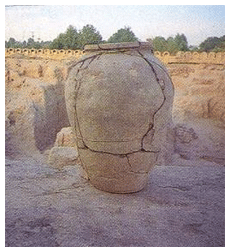- Latest Archaeology Updates
- Importance and applicability
- Famous Archaeologists
- Museums Collections
- Site Map
- World Heritage Sites
- World History Monuments
- Archaeological Organizations
- World Atlas of Archaeology
- Forensic Investigation and Geophysics
- Contact Us
- Movies based on Archaeology
- Frequently Asked Questions
- Archaeological discoveries
- Tell a Friend
- Archaeological Abbreviations
- Gallery Collections
- Famous-Museums site map
- Famous-archaeologists site map
- Archaeological Monuments site map
Archaeological science (also known as Archaeometry) is the application of scientific techniques and methodologies to archaeology. Significant new data can be obtained using these techniques, which has the potential to alter the understanding of the past. A good example of this is the so-called "Second radiocarbon revolution", which significantly re-dated European prehistory in the 1960's (the first radiocarbon revolution was the original introduction of the method to archaeology).
As indicated, one of the most important applications of archaeological science has been the absolute dates it can provide for archaeological strata and artifacts. Radiocarbon dating - for dating organic materials
Some of important dating methods are:
- Dendrochronology - for dating trees, but also very important for calibrating radiocarbon dates.
- Thermoluminescence dating - for dating inorganic material including ceramics.
- Potassium-argon dating - for dating fossilized hominid remains.
- Electron spin resonance
- Optically simulated resonance or Optical Dating
- radiocarbon Dating
However, archaeological science has been applied in many other ways. A variety of methods have been used to analyze artifacts, either to determine more about their composition, or to determine their provenance. These techniques include:
- X-ray fluorescence (XRF)
- Inductively coupled plasma mass spectrometry (ICP-MS)
- Neutron activation analysis (NAA)
- Scanning Electron microscopy
- Laser induced breakdown spectroscopy
Lead, strontium and oxygen isotope analysis can also
be applied to human remains to estimate the diet and
the even birthplace of study subjects.
Provenance analysis has the potential to determine
the original source of the material used, for example,
to create a particular artifact. This can show how
far the artifact has been transported and can be used
to indicate systems of exchange.
The use of remote sensing has enabled archaeologists to identify many more archaeological sites. than would otherwise have been impossible. The use of aerial photography remains the most wide-spread remote sensing technique, but this has been supplemented by the use of satellite imagery, especially with the declassification of images from military satellites.
Techniques such as lithic analysis, paleobotany, palynology and zooarchaeology are also sub-discplines of archaeological science.
-
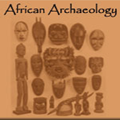 African Archaeology Africa has the longest record of human activity of any part of the world and along with its geographical extent; it contains an enormous archaeological resource. Scholars have studied Egyptology for centuries but archaeologists have only paid serious attention to the rest of the continent in more recent times.
African Archaeology Africa has the longest record of human activity of any part of the world and along with its geographical extent; it contains an enormous archaeological resource. Scholars have studied Egyptology for centuries but archaeologists have only paid serious attention to the rest of the continent in more recent times. -
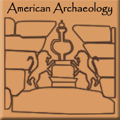 American Archaeology Archaeology of the Americas is the learning of the archaeology of North America, Central America (or Mesoamerica), South America and the Caribbean, which is to say, the pre-history and Pre-Columbian history of Native American peoples.
American Archaeology Archaeology of the Americas is the learning of the archaeology of North America, Central America (or Mesoamerica), South America and the Caribbean, which is to say, the pre-history and Pre-Columbian history of Native American peoples. -
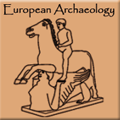 European Archaeology In terms of area, Europe is the world's second smallest continent, with an area of 10,400,000 kmē (4,000,000 square miles), making it slightly larger than Australia.
European Archaeology In terms of area, Europe is the world's second smallest continent, with an area of 10,400,000 kmē (4,000,000 square miles), making it slightly larger than Australia. -
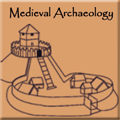 Medival archaeology The period covers the commotion caused by the fall of the Medival archaeology Roman Empire and cultures such as the Vikings, Saxons and Franks.
Medival archaeology The period covers the commotion caused by the fall of the Medival archaeology Roman Empire and cultures such as the Vikings, Saxons and Franks. -
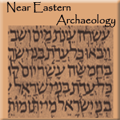 Near Eastern Archaeology Near Eastern Archaeology is a wide generalised application, and is divided into further regional sub-branches, the archaeology of modern states in the region or along broad thematic lines.
Near Eastern Archaeology Near Eastern Archaeology is a wide generalised application, and is divided into further regional sub-branches, the archaeology of modern states in the region or along broad thematic lines. -
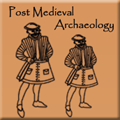 Post Medieval Archaeology The Post Medieval Archaeology is considered as a bi-annual journal study of the material evidence of European society. This period saw the conversion of medieval to industrial society.
Post Medieval Archaeology The Post Medieval Archaeology is considered as a bi-annual journal study of the material evidence of European society. This period saw the conversion of medieval to industrial society. -
 Modern Archaeology In contrast to the antiquarianism of classical archaeology, anthropological archaeology today is concerned with culture history (i.e., the chronology of events and cultural traditions) and the explanation of cultural processes.
Modern Archaeology In contrast to the antiquarianism of classical archaeology, anthropological archaeology today is concerned with culture history (i.e., the chronology of events and cultural traditions) and the explanation of cultural processes.

